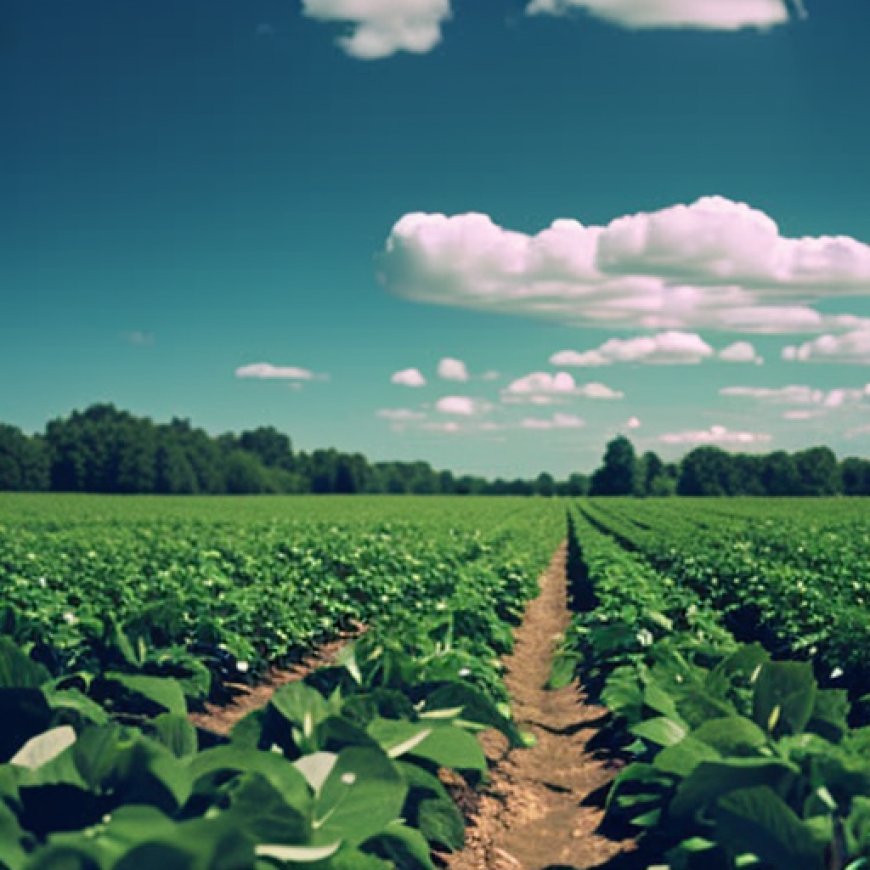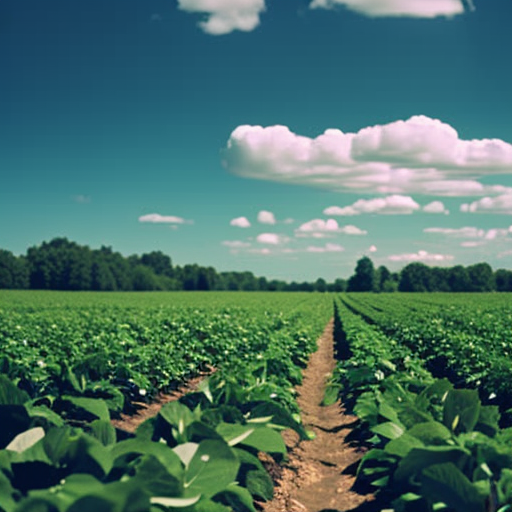Troxler: NC farms under threat from rapid growth
Troxler: NC farms under threat from rapid growth WRAL News


North Carolina’s Farmland at Risk of Significant Loss by 2040
North Carolina could lose as much as a fifth of its farmland to development by 2040. That was the warning Thursday from state Agriculture Commissioner Steve Troxler, who said the state needs to do more to preserve farmland now.
Challenges Faced by North Carolina’s Agriculture Industry
Speaking at this year’s Agricultural Development Forum, Troxler spoke about the many challenges rapid growth has brought to the state, including access to natural resources, outdated infrastructure, and urban sprawl.
Agriculture in North Carolina is a $103 billion industry, the state’s largest economic driver, and he said it’s especially vulnerable to those challenges.
Impact of Rapid Growth on Natural Resources and Infrastructure
“North Carolina ranks number three in the nation as far as the number of people that are moving in here,” Troxler said. “If you’re dependent on natural resources like we are in agriculture, certainly there’s going to be an impact and we’re beginning to really feel that impact in North Carolina.”
Troxler said road construction is perpetually one step behind what’s needed, and the push to turn roads into highways makes it harder for farmers to move large equipment. The state’s power supply isn’t keeping up with growing demand, either, he added.
He cited water as another big concern, recalling the drought the state experienced beginning in 2007.
Loss of Farmland to Urban Encroachment and Economic Development
But the most pressing concern, Troxler said, is the loss of farmland to urban encroachment and economic development. He said the American Farmland Trust ranks North Carolina the second most likely state to see large-scale farmland losses by 2040.
Out of about 8.3 million acres of present-day farmland, experts estimate the state will lose between 1.2 and 1.7 million acres over the next 15 years.
The state has protected 34,000 acres of farmland so far, but that’s just a drop in the bucket, Troxler said, and rising land prices are making it harder than ever to make headway.
For example, he said, Chatham County will be the site of a new 8,500-acre planned development and a 3,000-acre automotive plant. “So while we have worked our butts off to protect 34,000 acres of farmland, we’re going to lose 11,500 acres just like that.”
Insufficient Funding for Farmland Preservation
State lawmakers allocated $25 million for farmland preservation in the most recent budget, but Troxler called that “not nearly enough,” noting that New York has spent $250 million for upstate farm preservation there.
“You look at the states that have these really robust programs to protect farmland, the reason being they’ve already lost the most of it,” Troxler said. “We’ve got to be smarter than that in North Carolina. We’ve got to get ahead of the curve.”
Emphasizing the Importance of Sustainable Development Goals
Troxler emphasized the need to prioritize the Sustainable Development Goals (SDGs) in order to address the challenges faced by North Carolina’s agriculture industry. The SDGs provide a framework for sustainable development and can guide efforts to protect farmland, preserve natural resources, and ensure food security.
“Heaven forbid we don’t have the natural resources to feed ourselves. The last thing we want to do is to be dependent on another country to feed us. It never works,” Troxler said to applause from the crowd.
SDGs, Targets, and Indicators
-
SDG 2: Zero Hunger
- Target 2.4: By 2030, ensure sustainable food production systems and implement resilient agricultural practices that increase productivity and production, that help maintain ecosystems, that strengthen capacity for adaptation to climate change, extreme weather, drought, flooding, and other disasters, and that progressively improve land and soil quality.
- Indicator 2.4.1: Proportion of agricultural area under productive and sustainable agriculture.
- Indicator 2.4.2: Average income of small-scale food producers, by sex and indigenous status.
-
SDG 11: Sustainable Cities and Communities
- Target 11.3: By 2030, enhance inclusive and sustainable urbanization and capacity for participatory, integrated, and sustainable human settlement planning and management in all countries.
- Indicator 11.3.1: Ratio of land consumption rate to population growth rate.
- Indicator 11.3.2: Proportion of cities with a direct participation structure of civil society in urban planning and management that operate regularly and democratically.
-
SDG 15: Life on Land
- Target 15.1: By 2020, ensure the conservation, restoration, and sustainable use of terrestrial and inland freshwater ecosystems and their services, in particular forests, wetlands, mountains, and drylands, in line with obligations under international agreements.
- Indicator 15.1.1: Forest area as a proportion of total land area.
- Indicator 15.1.2: Proportion of important sites for terrestrial and freshwater biodiversity that are covered by protected areas, by ecosystem type.
Analysis
1. Which SDGs are addressed or connected to the issues highlighted in the article?
The issues highlighted in the article are connected to SDG 2: Zero Hunger, SDG 11: Sustainable Cities and Communities, and SDG 15: Life on Land.
2. What specific targets under those SDGs can be identified based on the article’s content?
Based on the article’s content, the specific targets that can be identified are:
- Target 2.4: By 2030, ensure sustainable food production systems and implement resilient agricultural practices.
- Target 11.3: By 2030, enhance inclusive and sustainable urbanization and capacity for participatory, integrated, and sustainable human settlement planning and management.
- Target 15.1: By 2020, ensure the conservation, restoration, and sustainable use of terrestrial and inland freshwater ecosystems and their services.
3. Are there any indicators mentioned or implied in the article that can be used to measure progress towards the identified targets?
Yes, there are indicators mentioned or implied in the article that can be used to measure progress towards the identified targets:
- Indicator 2.4.1: Proportion of agricultural area under productive and sustainable agriculture.
- Indicator 2.4.2: Average income of small-scale food producers, by sex and indigenous status.
- Indicator 11.3.1: Ratio of land consumption rate to population growth rate.
- Indicator 11.3.2: Proportion of cities with a direct participation structure of civil society in urban planning and management that operate regularly and democratically.
- Indicator 15.1.1: Forest area as a proportion of total land area.
- Indicator 15.1.2: Proportion of important sites for terrestrial and freshwater biodiversity that are covered by protected areas, by ecosystem type.
Table: SDGs, Targets, and Indicators
| SDGs | Targets | Indicators |
|---|---|---|
| SDG 2: Zero Hunger | Target 2.4: By 2030, ensure sustainable food production systems and implement resilient agricultural practices. | Indicator 2.4.1: Proportion of agricultural area under productive and sustainable agriculture. |
| SDG 11: Sustainable Cities and Communities | Target 11.3: By 2030, enhance inclusive and sustainable urbanization and capacity for participatory, integrated, and sustainable human settlement planning and management. | Indicator 11.3.1: Ratio of land consumption rate to population growth rate. |
| Target 11.3: By 2030, enhance inclusive and sustainable urbanization and capacity for participatory, integrated, and sustainable human settlement planning and management. | Indicator 11.3.2: Proportion of cities with a direct participation structure of civil society in urban planning and management that operate regularly and democratically. | |
| SDG 15: Life on Land | Target 15.1: By 2020, ensure the conservation, restoration, and sustainable use of terrestrial and inland freshwater ecosystems and their services. | Indicator 15.1.1: Forest area as a proportion of total land area. |
| Target 15.1: By 2020, ensure the conservation, restoration, and sustainable use of terrestrial and inland freshwater ecosystems and their services. | Indicator 15.1.2: Proportion of important sites for terrestrial and freshwater biodiversity that are covered by protected areas, by ecosystem type. |
Behold! This splendid article springs forth from the wellspring of knowledge, shaped by a wondrous proprietary AI technology that delved into a vast ocean of data, illuminating the path towards the Sustainable Development Goals. Remember that all rights are reserved by SDG Investors LLC, empowering us to champion progress together.
Source: wral.com

Join us, as fellow seekers of change, on a transformative journey at https://sdgtalks.ai/welcome, where you can become a member and actively contribute to shaping a brighter future.







